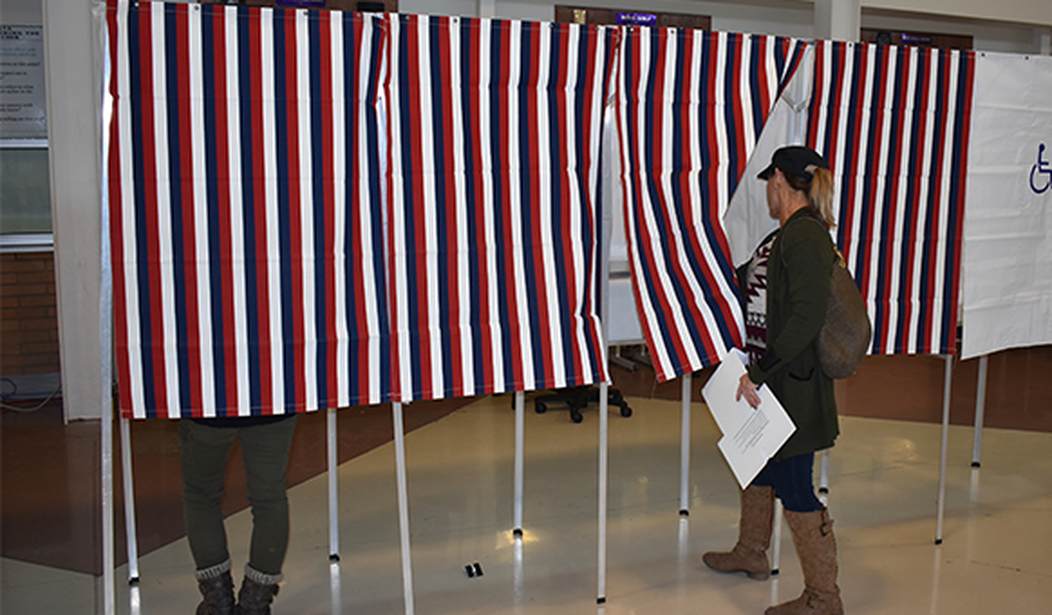Results from Monday night's caucuses in Iowa are still coming in. As of now, 92 percent of precincts are reporting and South Bend, Indiana Mayor Pete Buttigieg is currently in the lead, with Sen. Bernie Sanders (I-VT) in a close second.
Many of us have wondered what the hold up is and why the math is taking so long to calculate who came out victorious.
According to Lulu Friesdat, the founder of SMART Elections and a writer for The Hill, it looks as though there are rounding errors in the precinct math worksheets.
Thread. 1. Reposting these images now with the title
— Lulu Friesdat (@LuluFriesdat) February 6, 2020
"Iowa Math is the #NewMath." In my original post I called these #RoundingErrors. But they are not errors. This is exactly the way the Iowa Democratic Party wants the votes to be counted. #IowaCaucus https://t.co/VNCTZpSu88 pic.twitter.com/IYGzBFr1fI
2. From my post: "Because of the way the math was done at the caucuses, many precincts wound up with an extra delegate that got 'assigned' to one of the candidates at the end of the caucus. We were able to look at worksheets from 18 precincts that were posted on Twitter." #Iowa pic.twitter.com/vW1WqFSHq4
— Lulu Friesdat (@LuluFriesdat) February 6, 2020
3. "We found a strange process where numbers below .5 were being rounded up in multiple precincts. 6 of the precincts (1/3) had the unusual 'rounding up.' Of the 6 precincts with the "rounding up" - 4 were given to Buttigieg, 2 to Biden, and 1 to Warren. #IowaCaucuses #NewMath pic.twitter.com/hL4Mq6MaKO
— Lulu Friesdat (@LuluFriesdat) February 6, 2020
4. "We posted the results on Twitter, and at that point received an explanation about the math. We had originally called them 'Rounding Errors.' But it turns out they are not rounding errors. This is exactly the way that the Iowa Democratic Party wants the votes to be counted." pic.twitter.com/ejoOLMJHIG
— Lulu Friesdat (@LuluFriesdat) February 6, 2020
Recommended
5. "As seen above in the instructions on page 15 of the Precinct Leader Manual, if there are extra delegates after the 2nd round of voting, the extra delegates are assigned to the candidate with the 'highest decimal below 0.5.' " #NewMath #IowaCaucuses pic.twitter.com/WzlOfQEtNL
— Lulu Friesdat (@LuluFriesdat) February 6, 2020
6. "There doesn't appear to be any fraud here. Just a bizarre and arcane set of rules." #NewMath #IowaCaucuses pic.twitter.com/aIY3q1FfEo
— Lulu Friesdat (@LuluFriesdat) February 6, 2020
7. It's possible that because of the way the math is being done, more of these extra delegates are being generated. The candidates' totals are being divided not by the number of voters who stay till the end & vote, but by the original number of ppl who show up. #IowaCaucuses pic.twitter.com/kDkkBM1jHF
— Lulu Friesdat (@LuluFriesdat) February 6, 2020
8. Multiple people online say this is not a problem, but it violates one of the basic principles of #elections: that the number of voters has to match the number of cast votes. The Caucus math has a different number of voters than votes cast on many of the worksheets #IowaCaucus pic.twitter.com/0R2Jjv9kjP
— Lulu Friesdat (@LuluFriesdat) February 6, 2020
9. I spoke yesterday w/ Doug Jones, a comp sci prof at Univ. of Iowa. Jones has been active in the election reform movement for two decades & is a co-author of Broken Ballots - Will Your Vote Count? “If you follow the rules as written the math doesn't add up," he said. #NewMath pic.twitter.com/DT6ks4OIXQ
— Lulu Friesdat (@LuluFriesdat) February 6, 2020
10. Looking at Cedar County FM as an example of the way the formula was implemented, he pointed out, "Basically everyone who left early was counted as Buttigieg, because of the way it rounded." His overall assessment was, "The rules as written don't lead to a sensible result.” pic.twitter.com/bQUJbAHojc
— Lulu Friesdat (@LuluFriesdat) February 6, 2020
11. "This simply isn't any way to run an election. I shouldn't need to stay up all night trying to figure out how some ridiculously archaic rule works & have thousands of people debating whether it's inaccurate or just obscure." #NewMath #IowaCaucusResults https://t.co/VNCTZpSu88 pic.twitter.com/h4dVfwKy58
— Lulu Friesdat (@LuluFriesdat) February 6, 2020
12. "Elections need to be straight-forward and easy for people to follow. Not some sort of byzantine calculation that only the initiated high priests of caucus history are able to navigate." #IowaCaucusResults #SMARTelections pic.twitter.com/zejj3LeYnE
— Lulu Friesdat (@LuluFriesdat) February 6, 2020
13. "What is great about the Iowa Caucus is that all the votes are hand written on durable paper, so we can trust that they represent the voter's intent & ultimately we can observe, and hopefully, understand how they have been counted." #IowaCaucusResults #HandMarkedPaperBallots pic.twitter.com/ILFyz7DeKT
— Lulu Friesdat (@LuluFriesdat) February 6, 2020
"When Awarding Delegates, Decimals of .5 and greater are rounded up and decimals less than .5 are rounded down to the nearest whole number," the sheets instructions say. That's pretty straight forward math.
But here's where things get tricky. A rule in the Iowa Democratic Party's Precinct Leader Manual says that if the number of viable delegates is higher than the number calculated based on those who voted and the candidates still in the race, an extra delegate is given out. That extra delegate is given to the candidate with the highest decimal below .5. If there is a tie then a coin toss takes place for that extra delegate.
These are not rounding errors. This is from page 15 of the Precinct Leader Manual at https://t.co/AEUcjfBzBA pic.twitter.com/k44MWleDPn
— Jason Jones???? (@don_quickoats) February 6, 2020
According to Friesdat, the Iowa Democratic Party has yet to respond to her inquiry about delegate calculations.
I tried to contact the IDP all day for an explanation. They're not answering the phone & the caucus guide is not available. I'll update our site w/ this info, but the math is problematic. Extra delegates are there because you're dividing by total caucus members, not final voters. https://t.co/RaTkE1CLZb
— Lulu Friesdat (@LuluFriesdat) February 6, 2020
She did, however, point out one interesting fact: the delegate calculation is based on the original number of voters, not the final round. That means people are being counted for votes even when they're not voting when their candidate is no longer considered viable.
Regardless of the outcome, one thing is certain: this process is a mess. It's confusing, complex and, quite frankly, out-of-date.
The Iowa Democratic Party said they were double-checking the results to make sure they were accurate. Now we know why.
Editor's note: Lulu Friesdat deleted her original thread with precinct worksheets. It has been updated with her new thread showing additional information she has received.

























Join the conversation as a VIP Member